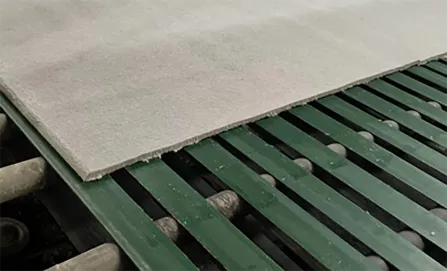- Afrikaans
- Albanian
- Amharic
- Arabic
- Armenian
- Azerbaijani
- Basque
- Belarusian
- Bengali
- Bosnian
- Bulgarian
- Catalan
- Cebuano
- Corsican
- Croatian
- Czech
- Danish
- Dutch
- English
- Esperanto
- Estonian
- French
- German
- Greek
- Hindi
- Indonesian
- irish
- Italian
- Japanese
- Korean
- Lao
- Malay
- Myanmar
- Norwegian
- Norwegian
- Polish
- Portuguese
- Romanian
- Russian
- Serbian
- Spanish
- Swedish
- Thai
- Turkish
- Ukrainian
- Uzbek
- Vietnamese
жнів . 13, 2024 20:06 Back to list
Understanding Laminated Gypsum and Its Applications in Modern Construction and Design Techniques
Laminated Gypsum A Comprehensive Overview
Laminated gypsum, often referred to as gypsum board or drywall, is a widely utilized construction material known for its versatility, ease of installation, and superior performance in various applications. Comprising a core made of gypsum plaster, laminated gypsum is typically sandwiched between layers of thick paper or fiberglass mat, giving it structural integrity and durability. This article delves into the properties, applications, advantages, and environmental considerations of laminated gypsum.
Properties of Laminated Gypsum
One of the most significant properties of laminated gypsum is its fire resistance. Gypsum itself is non-combustible and can resist fire for a specified duration, making it a preferred choice for building interior walls and ceilings. It also possesses sound-dampening qualities that help reduce noise transmission between rooms, thus enhancing indoor acoustics. In addition, laminated gypsum has good thermal insulation properties, contributing to a more energy-efficient building.
The material is light, easy to handle, and can be cut into various shapes and sizes, allowing for creative architectural designs. Its surface can be easily painted or finished to achieve the desired aesthetic. Furthermore, laminated gypsum is resistant to mold and moisture, especially when treated or used in specialized products, such as moisture-resistant boards for bathrooms or kitchens.
Applications of Laminated Gypsum
Laminated gypsum is primarily used in the construction and renovation of residential and commercial buildings. It serves as a primary material for interior walls and ceilings, offering a smooth and finished appearance. The material is exceptionally popular in the creation of partitions, allowing for flexible space management in offices, schools, and hospitals.
In addition to traditional uses in wall and ceiling applications, laminated gypsum is employed in various decorative elements. It can be shaped into intricate designs for moldings, cornices, and ceiling tiles, making it an essential material in architectural detailing.
Moreover, the construction industry has seen the rise of innovative applications for laminated gypsum in fire-rated assemblies, encapsulating pipes and ductwork, as well as in acoustic walls designed to reduce noise pollution
. The versatility of laminated gypsum allows it to meet various building codes and aesthetic demands.laminated gypsum

Advantages of Laminated Gypsum
The advantages of laminated gypsum are manifold. Its ease of installation means that construction timelines can be shortened, reducing labor costs. Additionally, the material is readily available and comes in various thicknesses and finishes, catering to diverse project requirements.
From an economic perspective, laminated gypsum is cost-effective. It requires minimal maintenance and can be easily repaired in case of damage. Its inherent fire, sound, and moisture resistance can lead to lower insurance premiums, particularly in commercial applications.
Environmental Considerations
As environmental awareness grows, the manufacturing process and lifecycle impacts of building materials are under scrutiny. Laminated gypsum is often viewed as a greener choice due to its natural composition. Gypsum, derived from a mineral, is abundant and can be recycled effectively, reducing construction waste.
Manufacturers are increasingly adopting sustainable practices, such as using recycled materials in the production of laminated gypsum boards and ensuring energy-efficient processing. These efforts contribute to the overall reduction of the environmental footprint associated with construction activities.
Conclusion
Laminated gypsum stands out as a multifaceted building material that combines practicality with aesthetic appeal. Its numerous advantages—ranging from fire resistance to ease of installation—make it a staple in modern construction. As the industry continues to prioritize sustainability, laminated gypsum is well-positioned to play a significant role in the future of eco-friendly building practices. Whether in residential, commercial, or decorative applications, laminated gypsum remains an indispensable asset in the world of architecture and design.
-
Transform Interiors with PVC Gypsum Ceiling: A Stylish, Durable, and Moisture-Resistant SolutionNewsMay.19,2025
-
The Smart Interior Upgrade: Discover the Durability and Versatility of Gypsum Ceiling Access Panel SolutionsNewsMay.19,2025
-
The Smart Choice for Interior Design: Discover the Value of PVC Gypsum Ceiling SolutionsNewsMay.19,2025
-
Mineral Fiber Ceiling Tiles: The Smart Blend of Performance and AestheticsNewsMay.19,2025
-
Mineral Fiber Ceiling Tiles: The Superior Choice Over Gypsum for Sound and Fire SafetyNewsMay.19,2025
-
Mineral Fiber Ceiling Tiles: Eco-Friendly Strength and Style for Every CeilingNewsMay.19,2025







